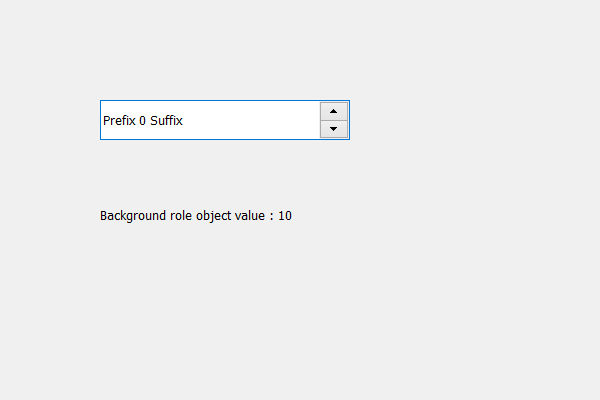En este artículo veremos cómo podemos obtener el rol de fondo del cuadro de número, hay básicamente dos tipos de roles en el cuadro de número uno es primer plano y el otro es segundo plano. La función de fondo define el pincel de la paleta del cuadro de número que se utiliza para representar el fondo. Si no se establece una función en segundo plano explícita, el cuadro de número hereda la función en segundo plano de su widget principal. Para configurar esto, usamos el método setBackgroundRole.
Para hacer esto usamos el método backgroundRole.
Sintaxis: spin_box.backgroundRole()
Argumento: No toma ningún argumento
Retorno: Devuelve el objeto QPalette.ColorRole pero cuando se imprime muestra su valor
A continuación se muestra la implementación.
Python3
# importing libraries
from PyQt5.QtWidgets import *
from PyQt5 import QtCore, QtGui
from PyQt5.QtGui import *
from PyQt5.QtCore import *
import sys
class Window(QMainWindow):
def __init__(self):
super().__init__()
# setting title
self.setWindowTitle("Python ")
# setting geometry
self.setGeometry(100, 100, 600, 400)
# calling method
self.UiComponents()
# showing all the widgets
self.show()
# method for widgets
def UiComponents(self):
# creating spin box
self.spin = QSpinBox(self)
# setting geometry to spin box
self.spin.setGeometry(100, 100, 250, 40)
# setting prefix to spin
self.spin.setPrefix("Prefix ")
# setting suffix to spin
self.spin.setSuffix(" Suffix")
# creating a label
label = QLabel(self)
# setting geometry to the label
label.setGeometry(100, 200, 300, 30)
# getting the background role object
object = self.backgroundRole()
# setting text to the label
label.setText("Background role object value : " + str(object))
# create pyqt5 app
App = QApplication(sys.argv)
# create the instance of our Window
window = Window()
# start the app
sys.exit(App.exec())
Producción :

Publicación traducida automáticamente
Artículo escrito por rakshitarora y traducido por Barcelona Geeks. The original can be accessed here. Licence: CCBY-SA